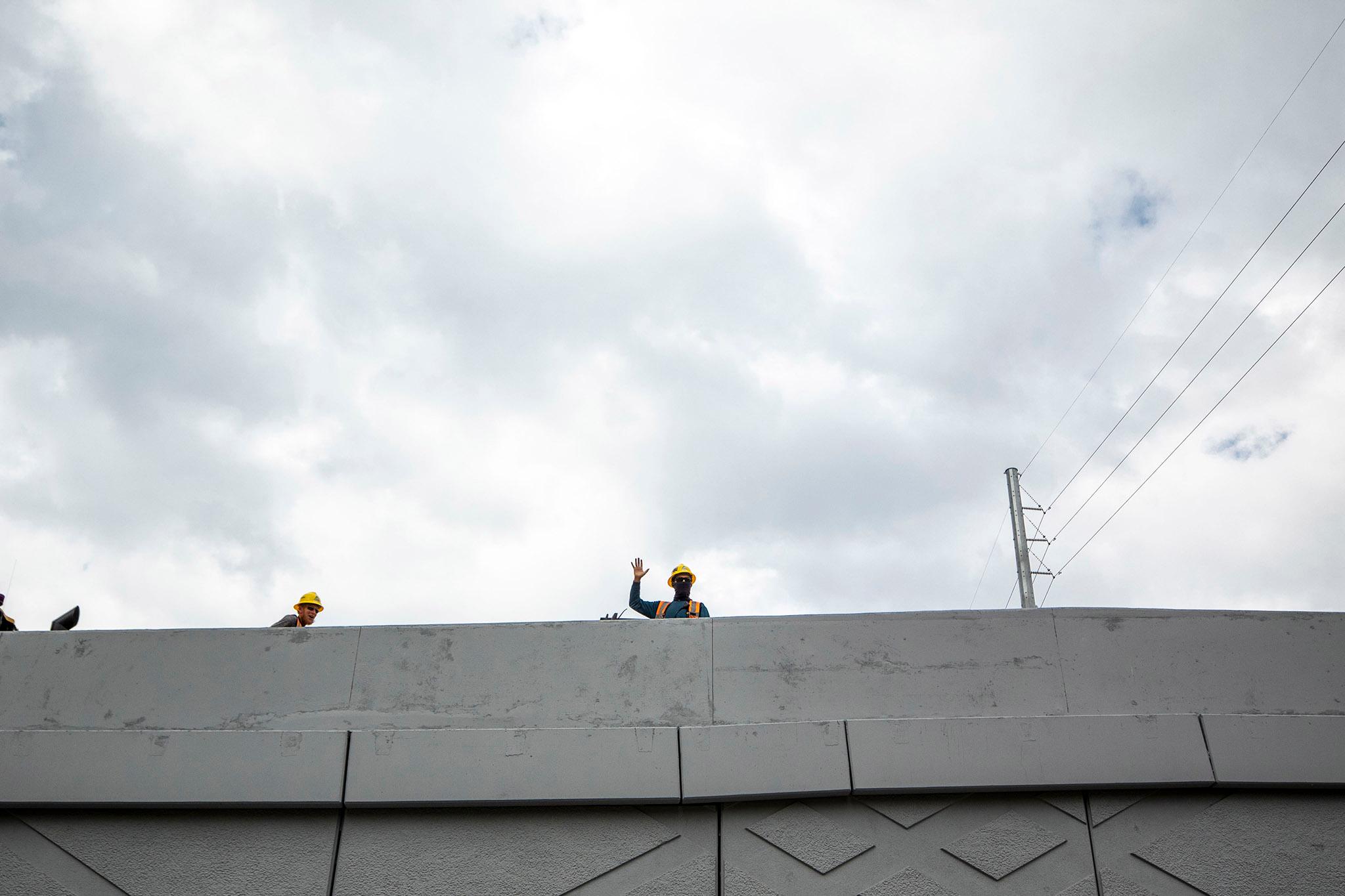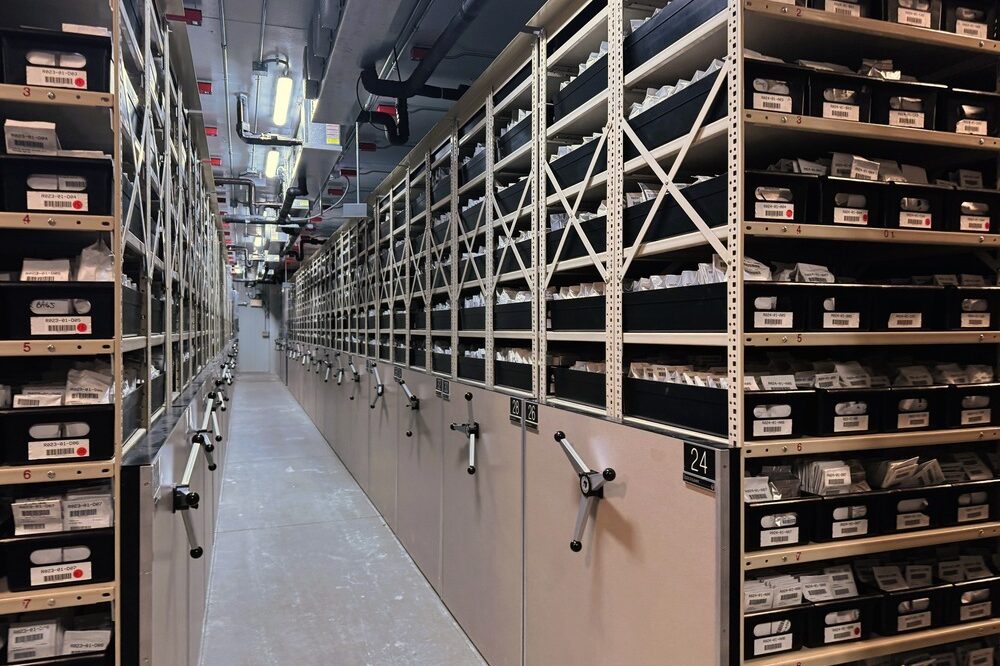
It’s a job seeker's market in Colorado, with twice as many openings as there are unemployed people. And two and a half years after COVID-19 drastically upended how and where people work, some of those changes look like they’re here to stay.
Since the beginning of the year, Colorado has added more than 50,000 new jobs. There are now more jobs in the state than before COVID and the unemployment rate has fallen to a pandemic low of 3.3 percent. All that adds up to Colorado having the second highest labor force participation rate in the nation at 69.5 percent.
“This year has been fantastic. It has been certainly a strong year for the jobs market,” said Eric Olson, the district president in Colorado of Robert Half, an international staffing company.
But the robust job market has a direct downside for employers — many continue to struggle to find workers. The latest data from the Bureau of Labor Statistics suggests there are almost two job openings for every unemployed person in Colorado.
The public sector has felt that imbalance particularly hard.
“Unfortunately, the current job market has made it incredibly challenging to recruit and retain staff,” said Annie Skinner, a spokeswoman for Colorado’s Department of Corrections (DOC).
Over the summer DOC held job fairs across the state to try to make up for its severe staffing shortage. Skinner said DOC and another state department teamed up with the goal of hiring 300 people over 30 days in July. They managed to exceed that as 530 people accepted job offers. But even with that hiring spree the departments still had more than 1,700 vacant positions.
The Steamboat Pilot & Today reported that the Colorado Department of Transportation is in "competition with Wendy’s" to fill 130 jobs on the Western Slope.
No shortage of choices for job seekers
Olson said it's an extremely active job market.
“We see all the time that people get laid off and they get multiple offers, usually very quickly and sometimes even at more money,” he added.
And while rising interest rates and the continued global uncertainty are causing jitters in the overall economy, the demand for hiring shows no signs of slowing down, according to Olson. He noted that the unemployment rate for people 25 years and older with a college degree is 2 percent.
With such a dynamic job market, workers are taking advantage. A survey in August from PricewaterhouseCoopers found that 65 percent of employees are actively looking for a new job. That means companies are worried about holding onto current employees at the same time they’re struggling to hire new ones.
“Many of our clients are worried about turnover. They're trying everything to entice people to come. We've seen over a third of our job offers get sign-on bonuses,” said Olson.
He noted that a survey of Robert Half’s clients found, “84 percent of the leaders of marketing and creative firms were worried about losing talent.”
Employers aren’t just opening up their checkbooks to attract workers, they’re also making other concessions. Some of Olson’s clients have had to reduce their demands for employee qualifications.
“[They said] we wanted five years experience. We can't find it. We're gonna have to take somebody with three and train them or grow with them into the role,” he said.
‘You're always worried that the people you're training up are just gonna jump ship’
When Matt Cook started looking for a new job at the beginning of the year, the challenge wasn’t getting a job offer, it was sifting through them all.
“Every day I'd get like 15 new job offers from recruiters or from just looking at job boards … it was just fatiguing,” he said.
Cook is a software engineer who has worked at tech startups for the past six years. Born and raised in Oregon, he graduated from the University of Wyoming and has now settled in Fort Collins.
The job offers he got weren’t always what they seemed, however. Cook said a problem in the tech industry is that companies grow so rapidly it can be difficult to maintain a strong work environment and some push workers to put in unsustainably long hours.
“What matters to me the most is the culture,” he said. “But so many companies are so good at not showing their true colors to their engineers.”
Cook has seen the labor shortage from the other side, too. Working in startups, he said, involves doing a bit of everything, including helping bring in new employees. “You're always worried that the people you're training up are just gonna jump ship as soon as they don't like what you're doing,” Cook said.
The demand for workers in the professional, scientific and technical industries has been particularly strong in Colorado. Between February and April 2020, during the first shock of the pandemic, those sectors lost 8,400 jobs. Since then, they’ve gained back 41,000 jobs, a nearly five-fold increase.

Workers seek fulfillment outside the service industry
Perhaps no sector has experienced more turmoil during the pandemic than the food service industry — and those struggles continue.
Three in five Americans have worked at a restaurant at some point in their career, according to the National Restaurant Association. During the 2020 lockdowns, the food service industry lost half of its employees. There are still fewer people working in the industry now than before COVID.
And turnover has also been higher in 2022. In July, 2.7 percent of all workers in the country quit their jobs. But in accommodation and food services, the quit rate was twice that, at 5.6 percent.
Hilary Brown of Greely is part of that exodus.
Until COVID, Brown had only worked in restaurants and bars. When the pandemic struck, she was laid off from her job as a server.
Brown began to realize how much better she felt, not having to interact with difficult customers all day. When her restaurant opened back up with the help of a Payroll Protection Program loan and she returned to her old job, she regretted it almost immediately.
“It all hit me at once after not doing it for a while and I just hated it,” she said. “I hated the way I felt every day because typically I feel so naturally joyful and I did not feel that way.”
Looking for a new opportunity, Brown turned to what she loved to do on her own time: personal training. With some cold calling and charm, she landed an entry-level position at a local gym as a personal trainer. The jobs, she said, “completely changed my life and the trajectory of it.”
Brown moved on from the gym after one of her clients offered her a job as an office manager at their HVAC company. They even offered to keep paying Brown for personal training at a private gym attached to the HVAC company.
“So it works out for me, I have this great job, plus I have a gym which is such a huge thing in my life. That's a benefit for me personally,” Brown said.
Three years ago Brown wouldn’t have believed she would be working in an office.
“I love it. I never thought I would, but I do. I used to totally bag on working in an office.” While she misses some aspects of the hospitality industry, she said she never plans on going back to it, adding that she’s “willing to budget a little more for happiness.”
Brown isn’t the only Coloradan who chose to leave the restaurant industry for a different career. Alex Gonzales recently left his restaurant job as well.
“I knew I wanted to serve in some capacity. I just didn't know what it looked like,” Gonzales said.
He weighed becoming a police officer or joining the military, but settled on training as an EMT with the goal of becoming a firefighter.
Gonzales said he wants to help people when they’re at their most vulnerable, from aiding a grandparent who’s fallen in the middle of the night to saving someone from a burning building.
And with fire departments eager for new recruits, the path to becoming a firefighter was even more attractive.
When the Loveland Fire Rescue Authority hired Gonzales, they offered to pick up the cost of his training, something firefighters usually have to cover on their own. He recalls them saying, “‘Hey, not only do we want to hire you, but we're gonna pay for your academy.’”
Gonzales, whose mother is also a firefighter, said he wants to work for more than just a paycheck. “It's that passion that you have for a job and it's not just about the money anymore.”
Some economists believe the job mobility seen since the pandemic began will have a lasting effect on the labor market.
“The pandemic definitely did something to shift workers' perceptions of those low-wage jobs,” said Colorado State University (CSU) economics professor Stephan Weiler. “Now that people have looked around and seen people that actually have changed careers, have changed course, they're beginning to feel a little more empowered to do the same thing.”

Colorado continues to attract and retain young talented workers
Over the last four decades, the number of people in the labor force has more than doubled, as people have moved to Colorado. Weiler said the state consistently attracts young, highly educated workers.
“People come to Colorado — and then look for jobs.”
Out-of-state businesses, drawn by many of the same factors, have also been relocating here, bringing their workers and employing new ones.
“We are an attractive location. I mean, Google moved to Boulder for a reason,” said Weiler. The company’s Boulder campus has become an integral part of Google’s growth outside of Silicon Valley.
As remote work has gone mainstream with the pandemic, an influx of new workers have arrived in remote parts of Colorado.
“Leadville has all of a sudden become a destination place, despite the altitude,” said Weiler.
Mountain towns offer workers a chance to enjoy the outdoors and avoid a crowded city, while keeping a high-paying job. But the sudden influx of new money has also contributed to a housing crisis and worker shortage.
That shortage could become the biggest long-term obstacle to keeping workers from coming to Colorado, Weiler believes. House prices in the state, and especially in the Front Range have skyrocketed in recent years. Rising gas and grocery prices are also contributing to unaffordability. It reminds Weiler of growing up in California in the ‘70s and ‘80s, a time when people eagerly moved to the booming state. That growth, however, proved unmanageable. California has one of the least affordable housing markets in the country and has now lost population two years in a row.
“My hope [is] that we can avoid that by thinking about affordable housing before there is no more land for affordable housing,” Weiler said.
Colorado lawmakers have been putting unprecedented amounts of money into affordable housing, and voters will decide whether to add even more this fall.
Job market going forward
Despite potential long-term headwinds, in the short-term, the state’s job market is poised to remain strong through the end of the year according to Olson.
“We don't see a slow down yet. We see an increase. We've seen more jobs come in with return to school,” he said.
Companies still have projects to complete and products to create. They also still need to build their teams for the future. Couple that with a competitive job market, and Olson said companies must keep hiring to stay ahead. He said many employers are coming to view their workers as the defining attribute of the company.
Weiler also believes that the state’s job market remains in good shape heading towards the end of the year. Highly educated people have been migrating to Colorado for decades now, and that trend is unlikely to change. He notes that about a quarter of students at CSU are from out of state.
“Betting on the Colorado job market is usually a pretty good bet,” Weiler said.









